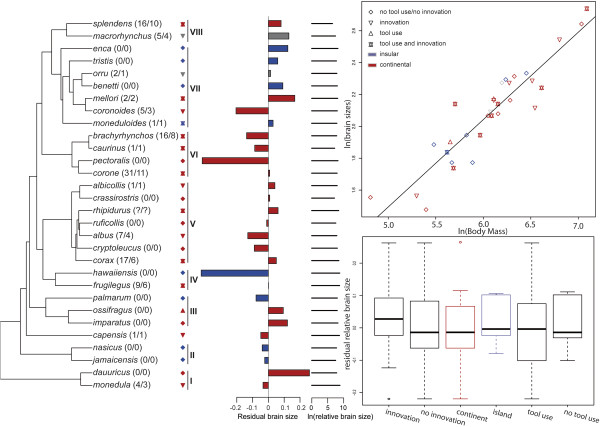Figure 3.
A) Phylogeny showing the taxa used in the comparative brain size analyses. Numbers in parentheses indicate the number of innovations followed by the diversity of innovations. Symbols indicate whether the taxon applies tools (upwards pointing triangle), innovative strategies (downwards pointing triangle) or both (star combining the two triangles) in its search for food. Distributions are indicated for islands (blue), continents (red) or both (grey). Island taxa are indicated in blue, continental taxa in red and combinations in grey. Residual brain size and relative brain size for the taxa are indicated to the right of the phylogeny B) Linear regression between brain and body mass. C) Box-plot displaying the difference (median, 25% and 75% percentiles and sample minimum and maximum) in relative brain size between Corvus species that use tools/no tools, Corvus species that apply innovation/no innovation and Corvus species that occur on islands/continents. Relative brain size represents residual values obtained from a linear regression between ln-transformed brain size and ln-transformed body mass.

